Transforming Wildfire Science

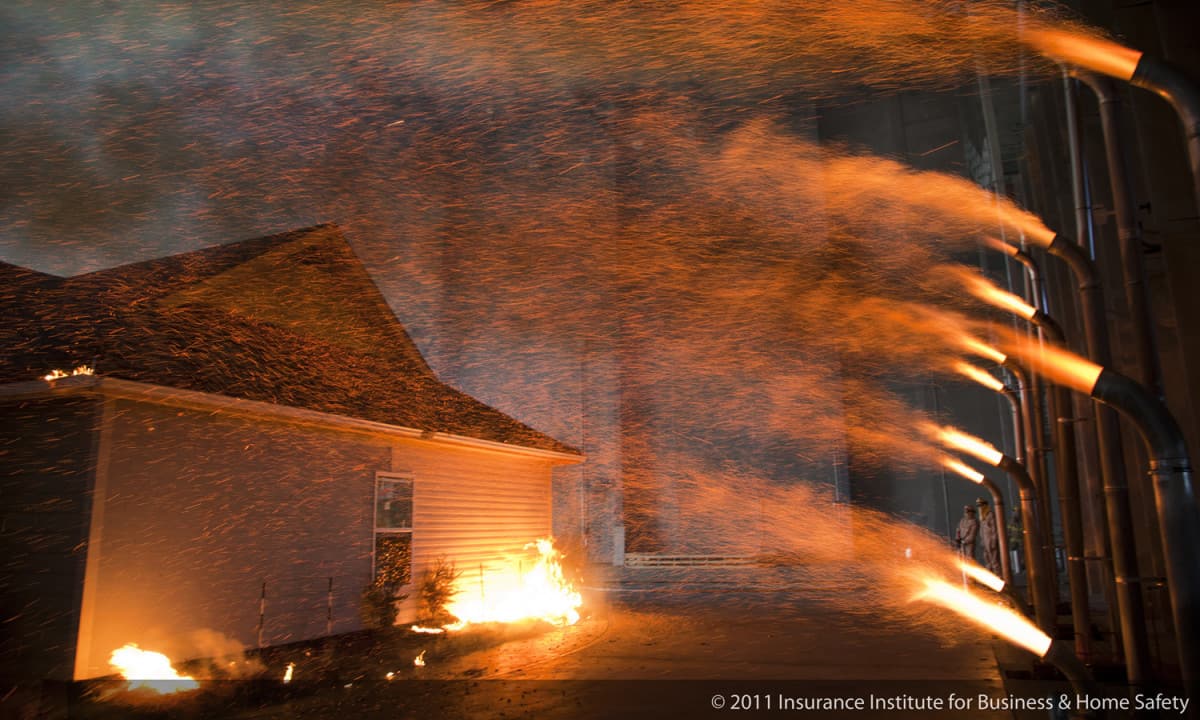
Transforming Wildfire Science
By Daniel Gorham & Faraz Hedayati
Recent wildfire seasons have brought a keen focus to this peril, but some have been paying attention to it for much longer. Ten years ago, IBHS Members recognized the rising wildfire losses in the Wildland Urban Interface (WUI) and this triggered the creation of the wildfire program in 2011, when Dr. Stephen Quarles joined IBHS to lead our research in this area.
Today, the only place beside real-world wildfire events that can expose full-size buildings and building components to realistic thermal exposure of flames and embers is the IBHS test chamber. The 55 ft wide turntable at the center of the chamber allows us to expose our test specimen to different fire intensities affected by wind angles and magnitudes. Creating a realistic scenario to study building vulnerabilities to wildfire has made IBHS the epicenter of wildfire research over the past decade and has attracted other research organizations to collaborate with IBHS.
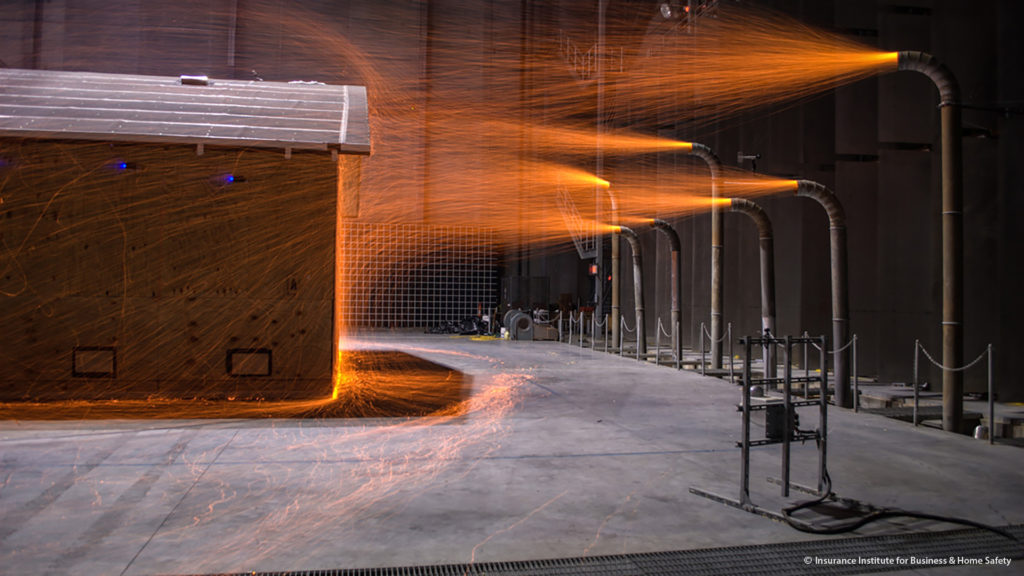
When you think of the IBHS Research Center wind likely comes to mind, but perhaps wildfire is not the first peril you imagine. Yet, “wind driven fire” and “wind-blown embers” are common terms to anyone who follows wildfire in the news. Wildland fire line growth is often pushed by wind. Spot fires, ignited by embers which can travel more than a mile outside of the perimeter, are attributed to dangerously rapid fire spread. Wind is critical for studying wildland fire and how it impacts the built environment.
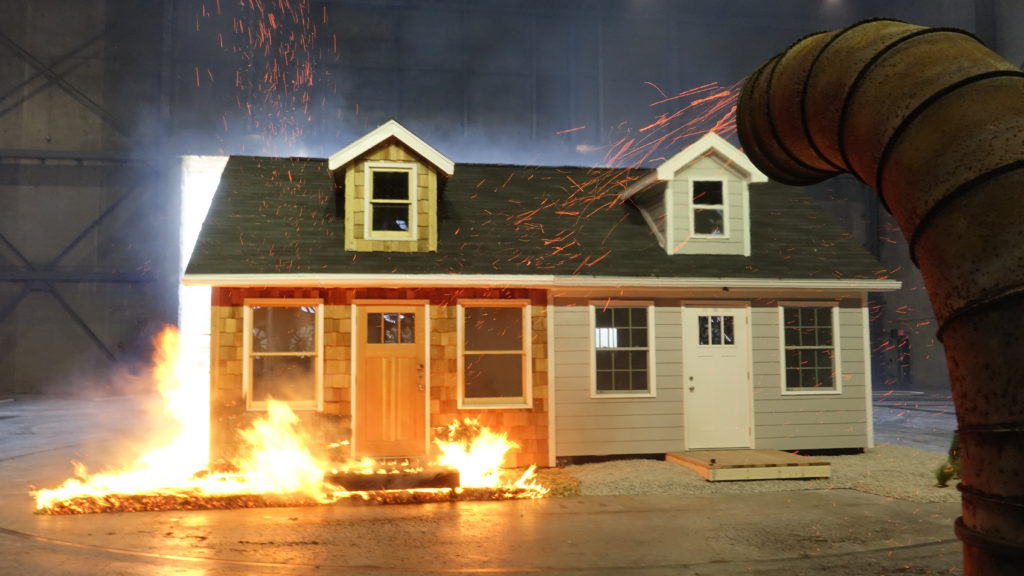
Over the course of 10 years, wildfire infrastructures have been engineered on campus to make this research possible, including a fire suppression system and kiln room. It was a team effort to bring our ideas to life – even Dr. Anne Cope’s husband, Brian, helped lend a hand. Brian recalls,
“We thought mulch was a good ember source, but mulch was really moist. Drying it by laying it out flat wasn’t working fast enough so we tried forced drying. The attempt to use our home clothes dryer was a total failure. It made such a mess and only really succeeded in pulverizing the mulch resulting in really wet dirt. We then thought we could put the mulch in a mesh dryer bag to contain it. Same result – pulverized wet dirt. The dryer was destroyed.”
Following the loss of the Cope’s dryer, researchers eventually settled on pressurized natural gas burners with forced air fed with a combination of mulch and wooden dowels, and the ember generators are now an iconic piece of the test chamber.
Testing programs evaluated individual components such as vents, fences, and wall assemblies as well as the building as a whole. The findings from this research are distilled to insight and actionable guidance homeowners and improvements to codes and standards. All while future wildfire scientists were nurtured at IBHS.

We joined IBHS in 2018 as Dr. Quarles’ retired though he continues to mentor us. It has been a tremendous honor and exciting opportunity to build on the wildfire legacy established at IBHS to make real-world impact. For Daniel, being a part of an organization that is a force multiplier in the fire community drives his passion as we look forward to future work and collaborations. For Faraz, introducing IBHS’s institutional knowledge about creating gusty winds is pivotal as we look to the future to expand the boundaries of wildfire research.
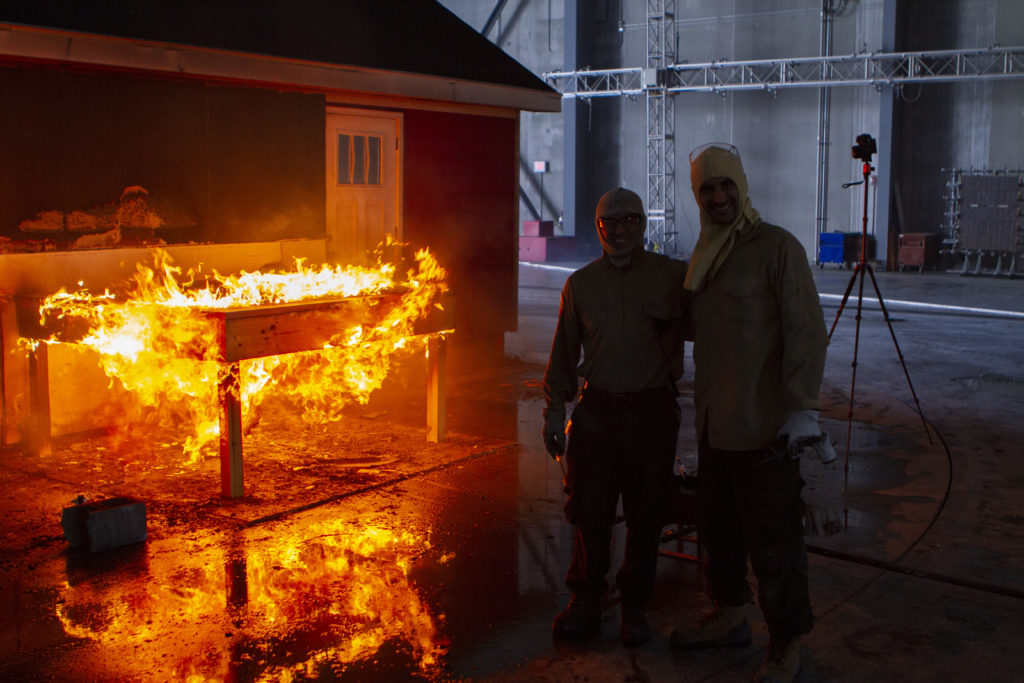
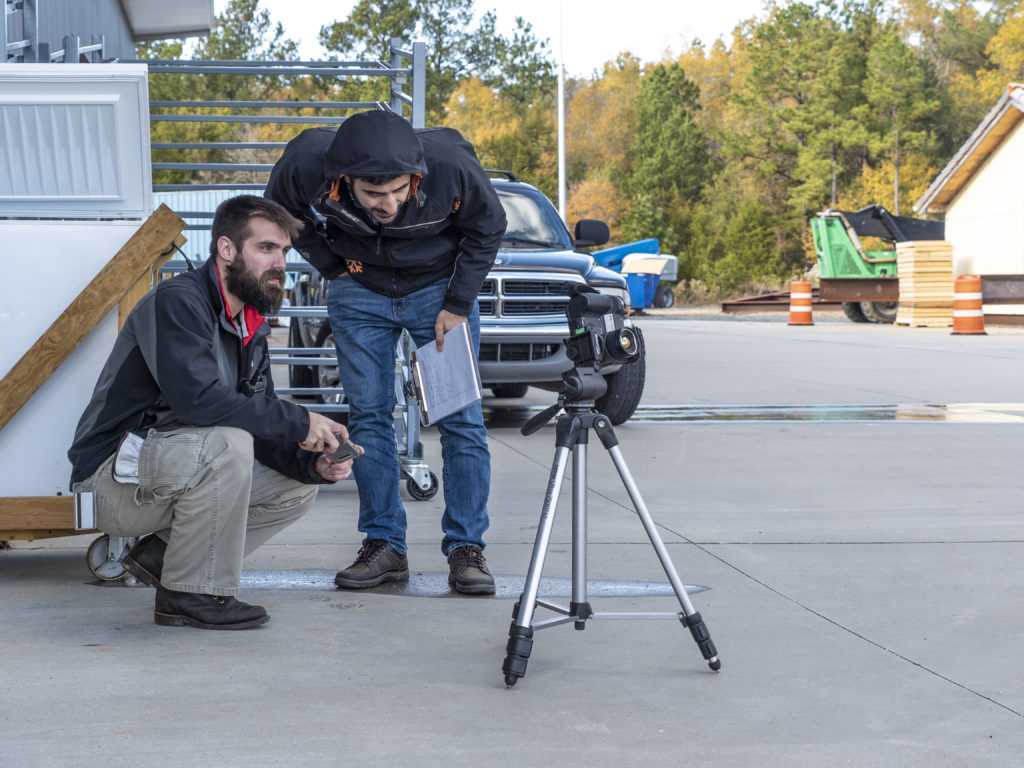
Many of the mitigation strategies recommended for wildfire resilience have been developed and demonstrated at the IBHS Research Center. Looking onward, the unique infrastructure of the lab enables IBHS wildfire scientists to expand the research and soon we’ll test one of the most challenging topics in the wildland-urban interface: building separation. IBHS will perform tests to provide a better understanding for the scientific community about fire spread from one building to another.
Daniel Gorham
Research Engineer
Faraz Hedayati
Research Engineer
Recent Posts
NOAA Weather
Tampa, FL
Last Updated on Jun 5 2024, 6:53 am EDT
Weather by NOAA
Current Conditions: Fair
Temp: 77°F
Wind: SE at 5mph
Humidity: 88%
Dewpoint: 73.0°F
 National Hurricane Center
National Hurricane Center
- The Atlantic hurricane season runs from June 1st through November 30th. April 19, 2025The Atlantic hurricane season runs from June 1st through November 30th.